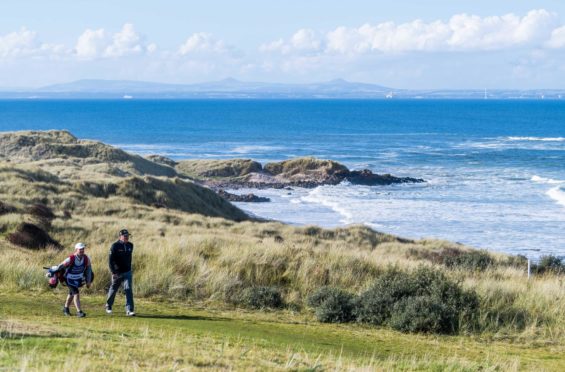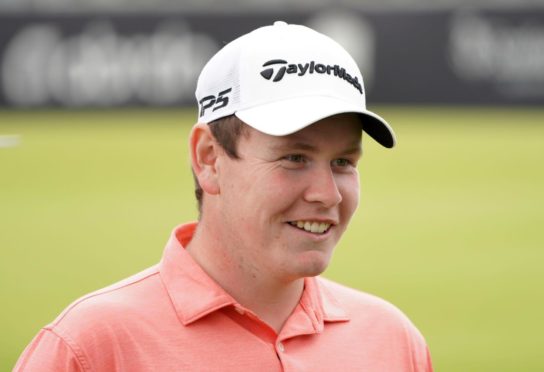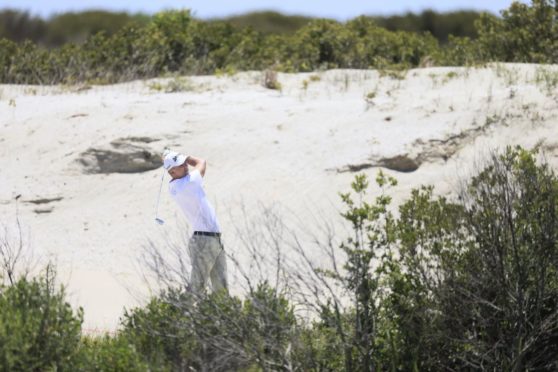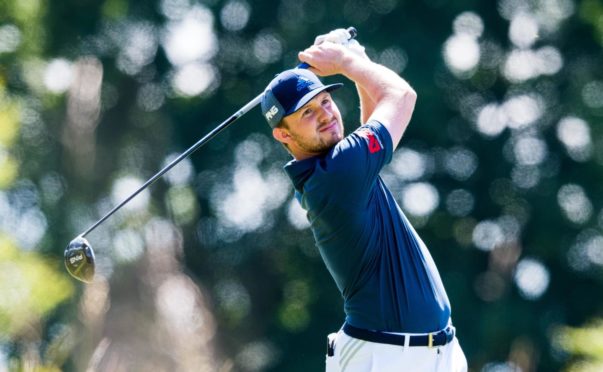In the first Open Championship of 1860 at Prestwick, 100% of the competitors were Scots.
Yes, there were only 13 entrants. But for the first 50 years of Opens, the vast majority of competitors were from the cradle of the game. In the early part of the 20th century, a fair few of the Americans who came to play the championship were actually naturalised Scots.
Eventually, other nations – lots of them – started to fill the entry list. But there was always a decent representation from the Home of Golf at the Open, no matter where it was staged.
Lonesome Bob is the only Scot at Sandwich
This year at Sandwich, the 149th Open, there is just one – Robert MacIntyre. Bob is exempt by virtue of his top 10 finish at the last Open, two years ago at Royal Portrush.
It’s an all-time low and if you look at it absent of context, it seems a crushing indictment of Scottish golf in the 21st century. The specifics, and the circumstances of the first post-pandemic, make it a great deal more nuanced than that.
I’d argue – strongly – that this is actually the best time for Scottish professional golf on the main tours for at least 10 years, probably since Colin Montgomerie’s career started to tail off.
There’s MacIntyre, of course, our first regular World Top 50 player since Marc Warren’s second career peak around 2015. Prior to Warren, Stevie Gallacher had edged into that territory in the previous two years while before that there was Monty.
While not yet a full member, MacIntyre has had some presence on the PGA Tour and will play more in America if his profile continues to advance.
As good a crew in tour golf as we’ve had in years
Martin Laird, having had a real career renaissance in the last 12 months, is currently 55th on the FedEx Cup points list. Russell Knox is 101st and has slipped back a bit this season, but both are still well established in the US.
Over on the European Tour, MacIntyre is currently 18th on the Race to Dubai, and won late last year. Calum Hill is 36th, Richie Ramsay 57th, Connor Syme 68th, Warren 76th, and Grant Forrest, Scott Jamieson, David Drysdale, Gallacher and David Law are all regular players who should retain their playing cards this season.
Ramsay, Warren and Gallacher have won multiple times on tour. Hill, Syme and Forrest have been close to victories within the past year. There’s a good scope of age range as well, with half 30 or under, half more experienced.
The loss of Open LFQs hit Scots hard
What an amphitheatre this is 🙌
The stunning 18th Green at Royal St George's ⛳️ pic.twitter.com/H8ieoY9AyS
— The Open (@TheOpen) July 12, 2021
Fair enough, but why aren’t more getting into our most prestigious national tournament? Because it’s a lot harder to get in nowadays, and especially so this year.
The last time Scotland had 10 players in an Open was in 2013, and that was the last year of Local Final Qualifying – when the final places in the championship were determined by a one-day, 36-hole tournament held at venues close to the championship host course.
The R&A scrapped LFQs in 2014 and changed to five sites across the UK. One was in Scotland, but it wasn’t restricted to Scottish entrants. There were just three or less spots available from the new version.
Why did this happen? The R&A see the Championship as the World’s Open, and they wanted the field to reflect that. They made more spots available to territories it serves around the world, like Australia, South Africa and the Far East.
The effect has been to greatly reduce the number of Scottish club pros and amateurs who can win themselves an Open place. In LFQs in the 1990s and 2000s, it was relatively easy for them as the venues were popular links courses they knew well, the likes of Lundin Links, Western Gailes, North Berwick and Dunbar.
The post-Covid landscape has made it even tougher
Still, Scots did manage to get a handful in by other routes once LFQs were ended. This post-Covid Open has been far tougher.
Firstly, qualifying categories from last year’s cancelled championship have been honoured. The advances made by young Scots like Hill and Syme have not registered as they might have.
Secondly, all FQ events, because of logisitics, were held in England. Few Scots could travel to take part, and there was no European Tour qualifier this year either.
Thirdly, our last two champions are off the board. Sandy Lyle’s exemption from 1985 ended when he hit 60 at Carnoustie in 2018. Paul Lawrie’s back issues forced his decision to retire from the European Tour last October. He hinted then he’d play just one more Open to say goodbye – most likely the 150th next year at St Andrews, you’d think.
Finally, and inevitably because of the ongoing covid-19 situation, there’s been a fair shuffling of spots in the last few weeks. Places have been added from various tournaments – regrettably, none of them have been won by Scots.
We surely should do better in the next few years
So that’s how we’ve arrived at the princely sum of one.
There were five Scots at Portrush and five at Carnoustie in each of the last two editions. We’ve lost Lyle and Lawrie. Knox’s form has slumped after playing in the last four Opens. And there’s this year’s loss of the FQ, where both Sam Locke and Connor Syme twice qualified in recent years.
I’d imagine we can easily get back to the five or six qualifiers of recent years. No way will we ever get back to the 13 or 14 that was common in the 1990s.
But I firmly believe there’s enough talent, established and developing, to get more prized players’ badges in future. Hopefully, this week Bob can make us feel like we’re still a central element to the greatest championship.



